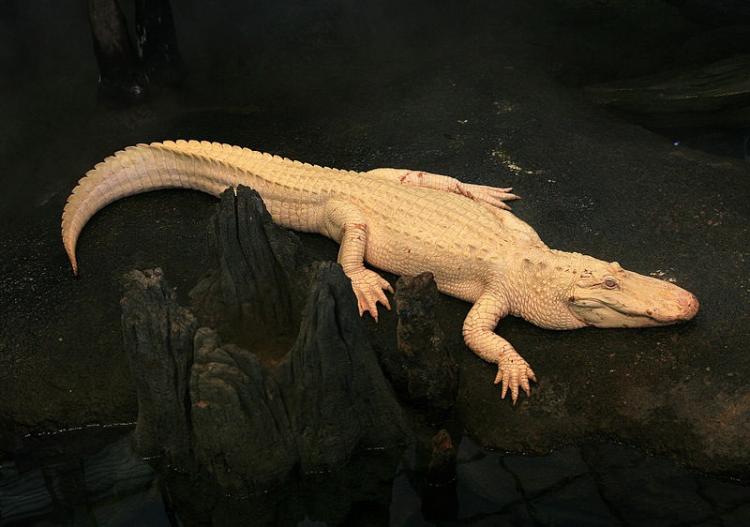Introduction to Protein Synthesis
How do the two alligators shown below differ?
At first the answer seems very easy. One has normal coloration. The other has abnormal coloration. But why do they have different coloration? The answer is in the alligators' genes. Genes carry the information needed by cells to produce proteins, and proteins can affect traits in various ways. In this example variation in the proteins in skin pigments give rise to different coloration. So how do genes, which are made up of DNA, determine which protein gets made?
Protein synthesis is the process in which cells build proteins. There are two main steps in protein synthesis: transcription and translation. Let's first look at transcription.
Transcription Overview
The first step in protein synthesis is transcription. In transcription, segments of DNA are copied into mRNA molecules.
Watch the following video for an overview of transcription.
The Process of Transcription
The genetic code in DNA is read three “letters” at a time so that each “word” is three bases long and corresponds to an mRNA codon. After an mRNA strand of codons is produced in the cell's nucleus it leaves the nucleus to play a role in the production of proteins in the cytoplasm.
Translation Overview
Translation is the step in protein synthesis in which the code carried by mRNA is fed into a ribosome “machine” that causes specific amino acids to be linked together to form a protein.
Directions: Watch the following video for an overview of translation.
The Process of Translation
The sequence of nucleotide bases in an mRNA molecule is a set of instructions that gives the order in which amino acids should be joined to produce a polypeptide. Once the polypeptide is complete it folds into its final shape, or joins with other polypeptides to become a functional protein.
Translation uses another type of RNA known as tRNA. Each tRNA molecule carries only one kind of amino acid. In addition, each tRNA molecule has three unpaired bases, called the anticodon. Each anticodon is complementary to one mRNA codon.
Check Your Understanding
Kid2Kid Video
Transcription and Translation
Watch this video to see Angela explain to her friend, Trey, the process of transcription and translation.
Transcripción y Traducción
Observa este vídeo y ve a Roxy explicándole a su amigo Trey los procesos de transcripción y traducción genética.

